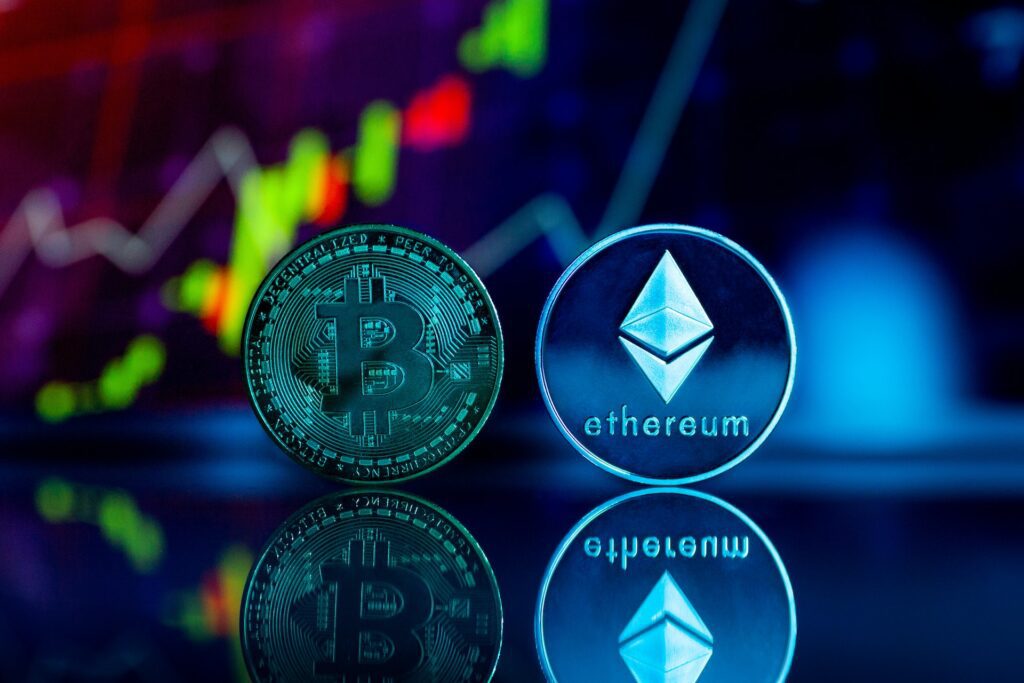Over the past years, one of the biggest buzzwords in all things technology is the metaverse, which represents a digital realm where people can engage with virtual worlds and interact with others in real time.
Seeing the potential in this technology and envisioning a world where people can go seamlessly transition between the real and digital realms, many tech giants have shown great interest in helping shape the metaverse’s future.
Surprising no one, gaming is undoubtedly one of the most promising areas within the metaverse – its unique mix of deep immersion and elevated interactivity provides a unique platform for developers to create fantastic experiences for its users.
But how does metaverse gaming work? In this article, we’ll go deeper into what it really means, the main design philosophies behind its games, and some types of games that might unleash the metaverse’s full potential.
Metaverse gaming: What is it?
In brief, the term “metaverse gaming” encapsulates the amalgamation of virtual worlds, extended reality (AR/VR) technology, and the Metaverse infrastructure to create games.
In this unique and still evolving realm, the line separating what’s real from what’s virtual is becoming increasingly blurred, and game developers are ready to build on top of it to offer an integrated and interconnected gaming experience.

The design philosophy behind Metaverse games
While it’s possible that one day we’ll have a single, centralized metaverse serving as the gateway to everything else in the network, the technology is not there yet. In fact, it’s far from it. For now, game creators must develop a metaverse of their own that players can join through the internet – think of them like Roblox experiences or Minecraft servers.
The architecture and design philosophy behind each Metaverse gaming experience will differ from one another, but they should fall into one of the following:
- Traditional centralized (or Web2) metaverse: they operate on a centralized system and don’t implement blockchain technologies into their framework. Instead, a central organization keeps hold of the users’ data and controls these virtual worlds. This is how most games work nowadays – just look at Fortnite, Grand Theft Auto V Online, and League of Legends, among many others;
- Centralized blockchain metaverse: built following Web3 principles, this type of Metaverse still has a central organization, but lets users create and exchange NFTs, virtual properties, and other digital assets for creating a separate, fully digital economic environment, like Earth2;
- Decentralized blockchain metaverse: also built following Web3 principles, these Metaverses are usually governed by smart contracts – and the decision power lies in the hands of their users. Decentralized blockchain Metaverses often run on a “play-to-earn” monetization model, but might require some initial investment to get started. Axie Infinity and Decentraland are two prime examples.
Metaverse gaming examples: What types of games are there?
By leveraging the concept of an interconnected virtual world, gaming in the Metaverse is likely to include the following types of games:
- Massively multiplayer online (MMO) games: offering vast and persistent virtual worlds for players to explore and interact with, MMOs are known for being highly immersive – especially if it’s a roleplaying game (MMORPG). The metaverse would allow for unparalleled immersive and social experiences at an unseen scale, fostering a sense of exploration, community, and even competition between players;
- Augmented Reality (AR) games: briefly speaking, AR technology is all about superimposing digital assets on top of the real world – think of Pokémon GO and the defunct Minecraft Earth. The Metaverse would only further enhance the AR gaming experience, making it more interactive and engaging;
- Virtual Reality (VR) games: these games, on the other hand, rely on simulating a digital environment, accessible only through a special headset. Currently, VR provides one of the most immersive gaming experiences, and allying it with the metaverse could create truly lifelike games. Working out while basking in the glory of fantastical environments doesn’t sound too bad, eh?
- Sandbox games: this type of game provides players with a vast, near-infinite world and tools for the player to create, build, and shape experiences of their own, relying heavily on the player’s creativity. In the Metaverse, these games have the potential to encourage collaboration at an unseen scale, and it might fuel a massive market of digital assets;
- Social games: with VRChat being one of the leading examples of this game type, it lets players create their own avatars and interact with others in virtual environments. Players would be able to attend digital conventions, interact with foreigners, play user-generated games, and even meet up with distant family members from anywhere in the world;
- Play-to-earn games: the integration of blockchain technologies allows for the creation and management of virtual assets with inherent economical value, enabling players to earn real-world rewards by gaming. This further blurs the boundaries between work and play but creates new and exciting opportunities for players all over the world.
However, as the technology is relatively recent and currently not mainstream, the number of Metaverse gaming experiences is low, but Grand View Research expects its virtual economy to generate almost a trillion in revenue by 2030 – so you better keep an eye out!

The technologies behind Metaverse gaming
Many technological advancements enable the Metaverse. Let’s take a look at the key ones:
- Extended reality (XR): in the Metaverse, extended reality technology (like AR and VR) is largely responsible for making these virtual worlds so immersive, interactive, and engaging;
- Blockchain technology: largely used in the world of NFTs and cryptocurrencies, blockchain plays a critical role in the metaverse by providing a safe and decentralized system for authenticating and exchanging digital assets. These transactions are then stored on a public ledger, which ensures trust and crystal-clear transparency;
- Internet of Things (IoT): by connecting consumer electronics (like a fridge or a microwave) and other objects (like a wristband) to the internet, it’s possible to make them collect and exchange data with the Metaverse, further boosting the sense of interconnectivity provided by the technology;
- Cloud computing: as users generate (and sometimes require) vast amounts of data, cloud computing provides the scalability that bigger metaverses require to run without performance hiccups;
- Artificial intelligence (AI): last, but not least, AI-related technologies, such as machine learning, natural language processing, and generative AIs, further enhance the Metaverse gaming experience by providing realistic character behaviors, adaptive gameplay tuning, and personalized experiences.

Transforming Gaming: The Rise of Metaverse and Its Impact on the Gaming Industry
In the rapidly evolving landscape of the gaming industry, the concept of the metaverse has emerged as a game-changer, promising a transformative future for gamers and gaming companies alike. The metaverse represents a virtual space, essentially a digital universe, where players can immerse themselves in a dynamic and interactive virtual environment. This concept, which combines elements of virtual reality, augmented reality, and crypto technologies, is gradually shaping the future of gaming. Gaming in the metaverse goes beyond traditional experiences, offering an immersive gaming experience within a decentralized and interconnected virtual world.
Major gaming companies, such as Epic Games, are actively investing in metaverse development, recognizing the potential of this futuristic gaming platform. The metaverse gaming industry is witnessing the integration of non-fungible tokens (NFTs) and crypto, introducing a new dimension to in-game assets and economies. As players switch to metaverse games, the traditional gaming landscape is undergoing a significant transformation, with multiplayer metaverse worlds providing virtual spaces for collaborative gaming experiences.
The metaverse’s impact on the gaming industry extends beyond entertainment, as companies face both challenges and opportunities within this digital realm. Navigating the decentralized metaverse economy, creating metaverse projects, and understanding the power of the metaverse are pivotal aspects for gaming companies aiming to thrive within this evolving space. The metaverse has become increasingly popular since its inception, and its development is shaping the future of both gaming and the broader digital landscape. As we delve deeper into the metaverse, it becomes evident that this digital frontier holds tremendous potential, not only for the gaming world but also for applications beyond traditional gaming.
Closing thoughts
In conclusion, metaverse gaming is at the forefront of a potential revolution in how we interact with digital experiences. As the world goes more digital and the lines between real and virtual get more blurred, the Metaverse presents itself as a promising platform for developers to create immersive, interactive, and socially-driven gaming experiences.
By combining recent developments in the field of blockchain, the Internet of Things, AI, processing hardware, and extended reality devices, the Metaverse is paving the way for a new era of gaming where players can experience them like never before.
In the meantime, if you’re someone looking for highly qualified professionals to bring your game vision to life, look no further than us at Main Leaf! With our 13 years of experience in game design and development, we can assist you in bringing your metaverse, mobile, console, and desktop game ideas to life.
While we usually work on fully-fledged titles from start to finish, you may outsource parts of your game to us, like creating compelling game assets and designing the blockchain architecture powering your game. Contact us below to get started with Main Leaf, your one-stop shop for all things game development!

